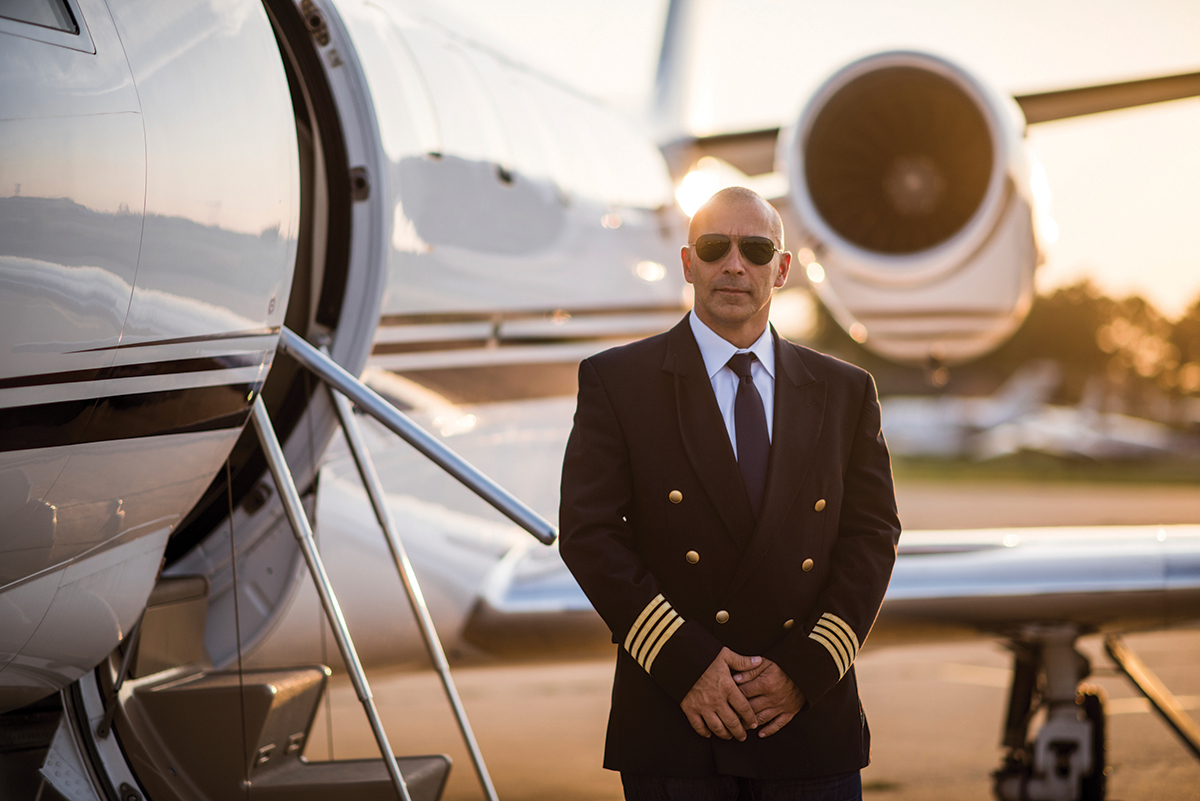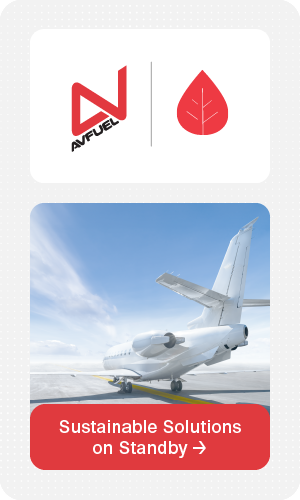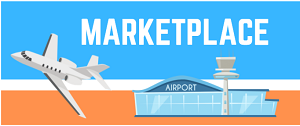As a post-COVID era emerges, businesses across a swath of industries are rebuilding after months of shutdowns and sheltering in place, and the general aviation (GA) sector is no exception. But for those who operate and support private aircraft, changing business conditions are likely to impact GA for some time to come.
As examples, inventories of pre-owned business aircraft are down, shifting the dynamics from a buyers’ to a sellers’ market. Maintenance facilities are stressed, and parts availability is especially challenging, as is staffing of experienced technicians. Along this line, corporate and on-demand charter operators are competing with the resurgent commercial airlines for pilots to replace those who took early retirements or severance packages when travel evaporated.
For a full appreciation of the issues confronting the GA industry, the current scarcity of pre-owned business aircraft on the market is a good place to start.
According to the authoritative JETNET Business Aircraft Database, the global business jet in-service fleet totaled 22,468 in July 2020. Of that, 2,322 or 10.33 percent were available for sale. Fast forward to July 2021: of the 22,770 business jets in service, 6.14 percent or 1,399 were on the resale market.
In 2020, the average age of a business jet on the resale market was 20 years old, with a total airframe time of 5,571 hours. The typical asking price was $3.799 million and the average time available on the market was 508 days. In 2021, by contrast, a used business jet for sale averaged 22 years of age with 5,489 flight hours and a $3.732 million price tag. The time on the market for a used jet in 2021 was about 589 days.
“A 6.14 percent inventory on the market is an unprecedented low, implying a strong sellers’ market,” said Paul Cardarelli, JETNET’s Vice President of Sales. “However, enthusiasm should be tempered, within this context, that some 35 percent of the inventory for sale today is in excess of 25 years of age.”
Cardarelli noted that average asking prices are down 1.8 percent this year compared to the same period in 2020, which, he said, would seem appropriate given the two-year increase in age for the average pre-owned jet offered for sale. However, he pointed out, market composition this year is up by three percent for large/ long range jets, while mid-size and light jets are down two percent and one percent respectively. “This suggests that downward pressure on large jet values continues in 2021,” he explained.
Cardarelli cited similar trends for business turboprops. According to JETNET statistics, of the 15,644 in service, 1,169 aircraft—or 7.47 percent of the fleet—was for sale in 2020. With airframes averaging 7,325 hours, the average price was $1.232 million. As of July this year, 838 or 5.33 percent of the total operating fleet of 15,732—with an average airframe of 7,305 hours—were on the resale market. The average asking price was $1.314 million.
“The exceedingly low inventory of turboprops offered for sale today has pushed asking prices up nearly seven percent,” said Cardarelli.
For turboprops, the average time on the market for 2020 and 2021, respectively, was 578 and 666 days, with ages averaging 25 years during 2020, and 27 years during 2021.
One of the unique aspects of the current market is what appears to be a phenomenal interest from first time buyers according to Don Dwyer, Managing Partner at Guardian Jet, a Connecticut-based aircraft broker. “In 2020, some 39 percent of our acquisitions were for that market segment,” he explained. “Prior to that time, I would estimate that first-time purchasers made up just 10 to 15 percent of Guardian Jet’s business.”
While the company has noted interest in all size ranges of business jets, Dwyer said that Guardian Jet customers are looking more at long-range, three-zone cabin models.
Pricing, he added, is expected to remain high as inventories have decreased and sales rates have increased. “I don’t see that changing in the short-term—at least for the next 12 months,” he said, “especially now that corporations are buying aircraft again.”
Russ Meyer, Chairman Emeritus of Textron Cessna and current Chairman of Wichita-based Citation Partners, gave two current real-world examples of strong residual values on the pre-owned jet market, using the Citation CJ3 light jet and the larger Citation XLS, both of which represent exceptionally high residual values.
“You would have paid about $4.5 million—new—10 years ago for a CJ3, but today, that same airplane, in good condition, would probably run $3-3.5 million on the used market,” Meyer said, adding that a new Citation XLS, which would have sold for $6.5 million new a decade ago, now fetches about $4.5-5 million on the resale market.
Meyer pointed out that for preowned aircraft, there is “a very high level of recognition today” that flight hours are not as meaningful as they once were. “Historically, a higher time airplane was not considered desirable. Age mattered more than it does today,” he said. “Now, what’s really considered important is that the airplane continues in production, because the longer an airplane is out of production, the more expensive it is to operate as parts become scarce and older systems are prone to more frequent failure.”
That, Meyer stressed, is why a higher percentage of customers purchasing preowned aircraft are more interested in the avionics package. “There will be some paint and interior work, but avionics package upgrades tend to be more popular,” he noted. “The new systems are lighter weight, and the displays are better and easier to activate. Technology has also improved reliability, and the warranties that the avionics OEMs offer today are much better than they once were.”
Meyer added that because of the strength of both new and pre-owned markets, “there is likely to be interest in the opportunity for turnkey programs to significantly upgrade older models that remain in production.”
Pre-owned aircraft sales, in combination with demand for avionics upgrades, exterior paint and cabin refurbishments, are keeping the GA maintenance repair and overhaul (MRO) facilities busy.
“There has been a rebound in general aviation maintenance activity, mainly because of an increase in domestic flying,” stated Jeff Lake, President of Nebraska-based Duncan Aviation. “There are some rebounds, as well, with our international customers, although not to the
extent of the domestic operators. All of this is happening in the face of a tight labor market and increasing constraints on hangar facilities.”
During the pandemic, according to Lake, Duncan Aviation’s hangars were full due to calendar events such as inspections and other work mandated by specific time intervals. Along with that, he noted, because there was not as much flying, some customers decided to take advantage of the down time to have the work done before it was due.
“Where we were not as busy was on discretionary spending work, such as new paint or refurbished interiors, but that, too, is beginning to rebound,” he pointed out. “When you get into new interiors, paint or upgraded avionics, the aircraft tend to be (in the shop) longer than during a scheduled inspection, so this also presents a capacity issue, which puts even more pressure on hangar facilities.”
Going forward, Lake predicted that MROs will remain strong, particularly because aircraft that were delivered within the last 10 years are beginning to hit their inspection cycles. At the same time, he said, pre-buy inspections are very strong. “The pre-purchase inspections often lead to discretionary work,” he remarked.
Still, Lake cautioned that the post-COVID upturn for MROs has been tempered with parts shortages, especially over the past six to nine months.
“Supply chain issues have impacted all aircraft, but it has become more of a challenge for legacy models,” he said. “A lot of businesses involved with the supply chain are struggling with labor shortages now because many of those companies let people go during the pandemic. Frankly, a lot of the OEMs (original equipment manufacturers) are having the same challenges with their own supply chain, which ultimately affects the MROs.”
For example, Lake reported that a number of aircraft have sat at Duncan’s facilities for multiple weeks because replacement rubber hoses are in short supply. “That was something we used to get within a day or two,” he said. “Certain parts that were once readily available, no longer are. The shortages won’t get better until people get back to work, and that is not going to happen overnight.”
And that, Lake added, is not solely a materials supplier problem. “As Duncan Aviation needed to increase staff, we did not have the applicant pool available—prepandemic—for both entry level and skilled positions,” he said. “Right now, there are more jobs available than people looking for work.”
Michael Parrish, Vice President of Sales at Elliott Aviation in Moline, Illinois, agreed. He reported that among the issues facing the MRO industry are early retirements of experienced talent. “Staffing is the number one issue in the MRO industry at this time,” he stressed.
Asked if the capacity is available to accommodate a surge of work, Parrish said that prior to the pandemic, “many MROs were already investing in expansion. For this reason, the capacity is available, but acquiring the talent to do the work is the major issue.”
Parrish also agreed that the industry is coping with extended lead times on products required for upgrades and modifications, such as avionics and the material required for interior work. “That’s why it is advisable to schedule work earlier, to allow for extended lead times,” he said. “For example, pre-pandemic, if you needed parts, there was about a two-week lead time. Now, the lead time for some parts is two to three months.”
He added that two additional trends are impacting the GA MRO industry: the number of first-time aircraft buyers and current operators upgrading to more sophisticated aircraft. “More people are moving into private aircraft, and as a result, the MRO industry has had to educate a lot of people about the process,” he remarked. “Given the big spike in aircraft sales, that circles back to the number one issue, which is the talent needed to support the aircraft.”
Not surprisingly, repair stations that fared best over the past 12 months were those capable of shifting work toward customers in business and general aviation, as well as the government services market—based on the Aeronautical Repair Station Association’s (ARSA) 2021 Member Survey and ongoing discussions with ARSA members. “Now that the aviation market is emerging from the disruptions of the pandemic, finding and retaining technical talent has become a primary strategic concern for the repair station community,” said Brett Levanto, ARSA’s Vice President of Operations.
Staffing shortages are not limited to MROs. Recruiting and retaining qualified pilots in the corporate and charter worlds will be challenging at best.
According to data published by Montreal-based pilot training company CAE (“Airline and Business Jet Demand Outlook—10 Year View, 2020 Update”), a total of 260,000 pilots will be required by 2029. Of that, the business jet sector alone will account for 58,000 active pilots. The same study indicates that over a 10-year period some 4.6 percent of the pilots flying business aircraft will leave annually for airline jobs, while 3.6 percent will leave each year due to attrition, including retirements. As a result, business jet operators will need to recruit 41,000 new pilots by 2029. In that year, the global business jet fleet is expected to increase by 3,600, for a total of 26,000.
Coupled with this is the fact that the business jet pilot group is aging, averaging 50 years, compared to 45 for the air carriers. In fact, according to CAE, 50 is the average age for the total world-wide civil aviation pilot cadre.
In the near-term, U.S. carriers will be rebuilding from the COVID crisis, which all but shut down the airline industry. This will present a challenging pilot recruitment and retention environment for GA operators, as seen by Louis Smith, President & CEO of FAPA.aero, a
career and financial planning firm for professional pilots.
“The major airlines are capable of massive publicity initiatives which can swamp the message and branding of smaller companies needing pilots,” said Smith, adding that the major airlines in the U.S. will need a quick 5,000 pilots to replace those lost during the pandemic. “The major airlines are ramping up now to do just that.”
Looking ahead, Smith reported that approximately 35,000 major airline pilots in the U.S. will reach the mandatory retirement age of 65 during the next 15 years. “Replacing those pilots and adding new pilots to satisfy the demand for an increase in cockpits seats could exceed a total of 50,000 new pilots needed at the major U.S. airlines,” he remarked.
Referencing data in FAPA.aero’s search tool, Smith pointed out that there are nearly 4,430 companies flying a total of over 19,000 aircraft—mostly under Part 135 charter rules. “Pilot attrition to larger companies and demand due to growth will present serious challenges,” he said.
Craig Picken, Managing Partner of the Northstar Group—an executive recruiting firm in Wilmington, North Carolina—predicted that competition for pilots from the airlines will drive wages up.
Picken, whose company focuses on mid-market aviation and aerospace firms, reported that some Part 91 operators are paying as much as $300,000 per year for captains on large cabin jets. “Part 135 operators are having a hard time keeping directors of operations, who are being poached and can make just as much money flying the line as they can managing people,” he stated.
Asked if there will be some recruitment and retention issues for pilots within the GA industry itself, Picken’s reply was, “Maybe, maybe not.”
“Commercial Airline pilots are forced to retire at 65, but Part 91 pilots can continue past that,” he explained. “If business aviation is willing to look at senior people who are highly skilled and living longer, then who knows? If the industry is not willing to do that, then it must ensure a balance of new pilots entering the industry at the same rates as older pilots retire, or the industry has to adapt technically to a lower supply.”
By Paul Seidenman and David Spanovich
As GA Expands, Is The Infrastructure Ready?
More people have discovered private flying since the onset of the pandemic, yet infrastructure issues are on the radar, starting with fixed base operators (FBOs).
“Demand for business aviation is climbing, thanks to the new challenges brought about by the pandemic,” said Mark Costa, an independent FBO consultant and former Director of FBO Operations for Signature Flight Support.
But while operations are increasing, FBO operational space has not grown to the same degree, Costa stressed, presenting one of the biggest challenges facing the industry. “Hangar space is constrained, despite record demand for tenant and transient aircraft storage, as well as maintenance,” he explained. “At the same time, airport real estate set aside for GA is limited. We are running out of space.”
According to Adam Guthorn, Managing Director of Alton Aviation Consultancy in New York, “Real estate is a key challenge” as airport authorities and operators seek to optimize use of their footprint in a land-constrained environment. “For example, ramp along with hangar space is becoming increasingly scarce, particularly at airports in major business centers, and especially as larger business jets proliferate, leading to congestion and safety issues,” he stated. “Business and general aviation (B&GA) airports must also contend with community-specific matters related to zoning, airspace, and noise abatement.”
While airports in the United States are generally better off than other neglected public infrastructures, Guthorn cautioned that substantial, multi-billion-dollar CAPEX (capital expenditure) requirements are needed for upgrades and modernization. Citing Airports Council International data, he explained that U.S. airports will require $400 billion in capital investment through 2040, including $115 billion for necessary infrastructure projects over the next five years. That, combined with a projected $40 billion pandemic related loss between March 2020 and March 2022 will complicate efforts to invest in much-needed infrastructure projects.
“A key concern has been the decline in revenues at B&GA airports, along with the businesses that serve them, as a result of COVID,” Guthorn said. “The government has stepped in to provide relief to airports to avoid widespread closures and layoffs, following the $100 million in grants that were provided to B&GA airports as part of the 2020 CARES Act.” The Biden Administration’s March 2021 stimulus package included an additional $100 million in “rescue grants” for B&GA airports to keep workers employed, construction projects going, and maintain operations during the crisis.
Government grants are a central source of funding for B&GA airports, Guthorn pointed out, citing the FAA’s July 2021 round of grants, totaling $845 million under its Airport Improvement Program. Those grants will address overhaul and expansion of critical airport facilities, including ramp and hangar space.
Along with government funding, the private sector is playing an increasingly larger role in airport infrastructure development, especially as government budgets tighten and airport finances worsen due to the pandemic. “Larger U.S. airport operators, such as the Port Authority of New York and New Jersey, have found success using public/ private partnerships (PPPs) to fund major infrastructure projects,” Guthorn reported. “However, PPPs have not been widely used for general aviation airports.”
Guthorn added that the Airport Investment Partnership Program (AIPP), a component of the 2018 FAA Reauthorization Act, could serve as a catalyst for further private investment in B&GA airports, as it permits airports to explore privatization as a means to access private capital for improvement and development. (Paul Seidenman)






